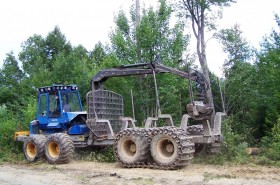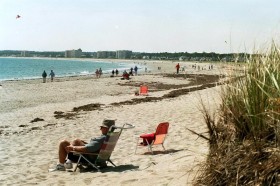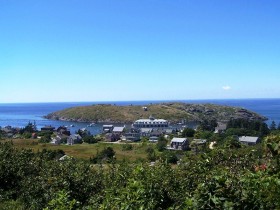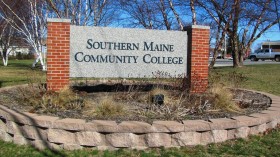Maine’s economy represents 0.4% (less than half a percent) of the U.S. national economy. With a slow national pace, Maine is likely to have slow growth as well.
The important forest products sector has been blunted by the recent events, including a slowdown in construction and the transition from printed media (newspapers, magazines) to digital alternatives such as electronic books and online advertising.
The tourism market is now in more competition with options such as foreign travel.
The finance sector is reasonably healthy with local bank ownership and insurance companies.
Most recent population growth has been in the greater Portland area and in the cities of Lewiston, Auburn and Bangor, where unemployment is lower than in the balance of the state. Overall, Maine has an aging population that will be supported by fewer people of working age.
According to the Muskie School’s economics professor Charles Colgan:
In 2000, there were 4.6 people in Maine between 20 and 64 for every person over 65. By 2030, this ratio will drop to 2.6 people 20-64 for every person over 65. The concern is that the “dependent” population of people over 64 will be inadequately supported by the working age population.1
He suggests that future generations of the workforce will make adjustments to serve the older population so that an economic calamity is not likely.
———————–
Forbes Magazine recently rated Maine as the worst state for businesses and careers. The Forbes ranking seems to be primarily driven by relatively high business costs (particularly energy costs) relative to the rest of the country (although similar to other New England states). This may not be surprising in a state with a small population dispersed over a large area, given that 40 percent of these costs are related to distribution and transmission. The low density of Maine’s population may also explain some higher taxes, since the costs of providing public infrastructure are higher on a per person basis.
For example, Mainers support about three times more road miles per person relative to our neighbors in Connecticut, Massachusetts, and Rhode Island. Yet on several other economic measures Maine does relatively well. For example, Maine’s December 2011 unemployment rate was 7.0 percent, about one percent better than the national average and in the middle of the pack relative to other New England states (Bureau of Labor Statistics 2012).
Further, Maine’s economy could be seen as more stable. Since 1976 Maine’s unemployment rate has been, on average, lower and it fluctuates less than the nation as a whole; since 2000, Maine’s unemployment rate has been below the national average seven out of eleven years. This may lead some, such Laurie Lachance, president of the Maine Development Foundation, to adopt a more positive tone, as she highlights Maine’s creative and practical people, innovative and resourceful companies, and resilient culture.(Lachance 2011).
Arguably, a productive approach to evaluating Maine’s economy is to acknowledge Maine’s economic challenges and strive to identify and seize opportunities for improving Maine’s long-term economic future. Despite facing numerous economic challenges, Maine is well situated to pursue economic opportunities. Various institutions in the state are advancing strategies to seize these opportunities.
These range from new education and training programs to meet short term business needs; to innovative regional initiatives focused around themes such as renewable energy, local food, knowledge generation, or the creative class; to long-term strategic investments in research and development (R&D) to promote an innovation-focused economy.
Maine’s Sustainability Solutions Initiative (SSI), which, among other things, regularly brings together economists from across the University of Maine System, represents a unique opportunity to align academic research and training for the betterment of Maine’s economy.
SSI is responsive to the key objectives of the “2010 Science and Technology Action Plan for Maine” (Maine Innovation Economy Advisory Board 2010) and supports Maine’s cluster-based economic development strategies (Maine Center for Business and Economic Research)2
Additional resources
“Charlie Colgan – 2013 Maine Economic Forecast.” Speaking in Maine. Maine Public Broadcasting Network. January 9, 2013. http://www.mpbn.net/OnDemand/AudioOnDemand/SpeakingInMaine/tabid/294/ctl/ViewItem/mid/3480/ItemId/25530/Default.aspx (accessed January 11, 2013)
1 Colgan, Charles. “Maine’s Aging Economy and the Economy of Aging.” Prepared for the Blaine House Conference on Aging. September 2006. http://muskie.usm.maine.edu/Publications/MaineAgingEconomy.pdf (accessed January 11, 2013)
2 Noblet, C., Bell, K.P., Colgan, C., & Teisl, M. (2012). Economic development and Maine’s Sustainability Solutions Initiative. Maine Policy Review, 21(1), 128-136.






